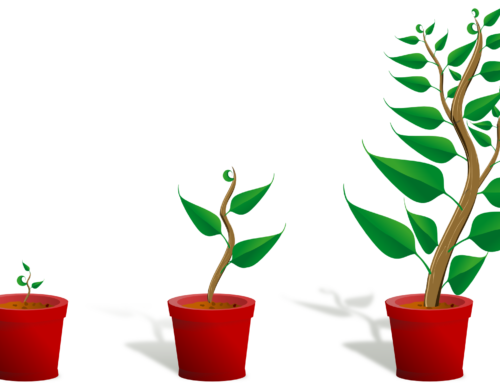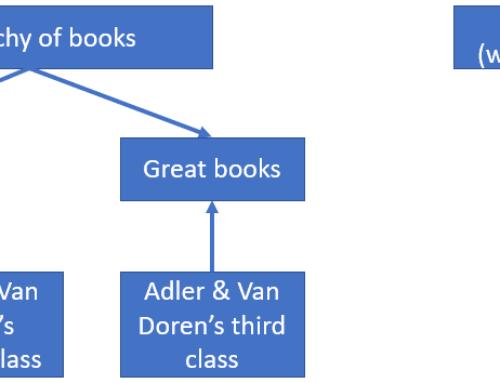03 Apr 2021
This essay was published in the Oxford University Psychology Society Journal, Issue #2, 2021
Introduction
Will I be hungry after work? Can I resolve a conflict with my friend tomorrow morning? Will I be happy if I married this person? We ask ourselves questions about our own future on a daily basis; and how we answer such questions often defines our current thoughts and actions. A poor answer can cost us an extra trip to the shop, an emotional row with a friend, or a lifetime of regret.
Given the importance of the answer to any future-prediction about ourselves, it serves to ask: how do we come up with an answer? Likely, not all ways of answering are made equal: when deciding whether I will be hungry after work, it is better to recall whether I am usually hungry afterwork instead of relying on a coin toss. So, what are the mental steps – implicit or explicit, conscious or unconscious – that we take during the process of generating an answer? And if there are better and worse ways to generate an answer, is there one that is the best? Perhaps…
A Working Example
To explicate the process of predicting our own future, let’s look at an example.
First, I decide what future event I specifically care about. For this example, let’s say that I want to know whether I will resolve an argument with my future long-term partner.
Second, I will now try to think of what the key components of the situation are that will define my actions. For instance, I could think that two things are important for resolving an argument: 1) the fact that this is a person I am going to spend a long time with; 2) the fact that I have a strong emotional attachment to this person. In this example, a long-term partner – by my personal definition – would be positioned relatively high on both components, say 9/10.
Third, I can try to ground my predictions in something that has already happened. So, I scour my past experiences (lived experiences as well as stories from others) for instances of a situation where I have had to resolve an argument. Once I find examples of my past behaviour in such a situation, I now make a mental note of how I performed across the key components identified in the previous stage – in each situation I will note how strong my desire to spend time with that person was and how strong my emotional attachment was with the person with whom I have had to resolve an argument.
Finally, with all of this information at hand, I can scale my past experiences to my future situation. Specifically, if a resolution was not reached in a past experience, maybe that was with a low desire to spend time with the person (say 2/10) and low emotional attachment (3/10), but in another situation a resolution was reached where I had relatively high desire to spend time with the person and high emotional attachment (both 7/10). This would give me an indication that the higher my desire to spend time with the person and the higher my emotional attachment, the more likely we are to resolve an argument. Given that my long-term partner would score high on both, I would conclude that in most situations we will be resolving conflicts successfully.
Albeit an overly simplistic example, it hints at how our everyday intuitions about the future can be more neatly captured in a systematic process. Fortunately, the best – so far – formalised version of this future-predicting process has already been invented: the scientific method[1].
The Theory – Everyday Future-predictions and the Scientific Method[2]
The scientific method for predicting human behaviour involves 4 key stages; these can be readily mapped onto the way in which we reason about our own future (see Table 1).
Stages 1 and 2
The first concern within both the scientific method and our everyday predictions about our own future is making sure we have defined our problem parameters as accurately as possible. When we try to predict a future situation, the first step is to ensure we have carefully defined what outcome we are interested in (stage 1) and only then can we attempt to identify what can possibly influence that outcome (stage 2).
Stage 3
Once we have identified all relevant variables (the outcome of interest as well as the key components that can influence the outcome), the next step is to collect some information about the key components that can inform our prediction. To do this, we can use various sources of information: our own past lived experiences, experiences and stories from others, even works of fiction, be it books, TV or internet; the collection of these experiences will henceforth be referred to as the experience database. To obtain experiences that are only relevant to our current future-prediction process, we need to filter the experience database based on the variables we have identified during stages 1 and 2.
Once we have identified situation-specific relevant experiences, the next step is to contextualise them. Contextualising experiences involves weighing the key components (stage 2) according to situational factors. For instance, using our working example, if all of my own past lived experiences where I have had to resolve a conflict with a person involved the other person being hungry, that might have had a strong effect on the specific situation. That would, in turn, prompt me to put much less weight on the relationship between the key components and the outcome of interest (stage 1) as a situational factor could have had too strong of an effect. Therefore, I would need to rely on other sources of information that I deem more reliable.
Stage 4
The final stage of the future-predication process of our actions involves scaling our contextualised experiences to the outcome we want to predict. Scaling involves mapping our past experiences to the future situation we want to predict while accounting for any situational differences.

Mapping the process of everyday future-prediction to the scientific method has both practical and theoretical benefits. For instance, we can use the wealth of writings about the scientific method to inform out everyday predictions; we can also begin to understand some individual differences in everyday future-prediction.
Implication: Translating Scientific Epistemology to Everyday Tools
Now that we know that our everyday predictions of the future can be informed by the best possible method, we can take advantage of insights from science to hone our daily reflections. In science, at each stage of the process, there are issues to be accounted for; consideration of these issues in everyday future-prediction can be useful.
Defining the outcome and its components
Scientists, especially within the social and behavioural sciences, are spending enormous time and effort on ensuring that they carefully define and operationalise the variables they study. A similar process is also quite useful in our everyday future-prediction process as it prompts us to think carefully about the future situation – after all, we, like social scientists, are trying to predict human behaviour but, unlike social scientists, we navigate a much less controlled environment. Failure to appreciate the complexity of the definition process can negatively impact our thinking in the following stages of future-prediction and lead us to erroneous conclusions, misguided thinking and inefficacious actions.
For instance, using the above example, my aim was to find what the outcome would be when I try to resolve a conflict with my future long-term partner. Upon reflection, this might be a rather poorly specified outcome as it’s too broad. Changing the outcome to resolving a conflict about who cooks dinner on a Thursday night prompts a different thought process and influences thinking in stages 3 and 4. It also prompts me to think that there might be other factors at play that influence how to resolve a conflict, such as timing. With this information, I can now add another key component to evaluate in stages 3 and 4.
Strange relationships
The more calories a baby eats, the taller it grows. This does not make much sense, but it is true, if you think about it – it just omits the fact that age explains both trends (as babies grow older, they need more calories and increase in height).
Eating 10 burgers a day protects against cancer. If you think about it, it is, once again, true – almost no person who eats 10 burgers a day will get cancer. But the statement neglects the fact that these people will simply develop heart disease quicker than they would develop cancer.
The examples, albeit extreme, highlight the fact that there are often relationships between phenomena that might not be readily explicable. It is all too often the case that we draw the firm and confident conclusion that one set of components caused a specific outcome but neglect to consider that it is highly likely that we have omitted another key component that can drastically alter our conclusion. Using the working example above, it is highly likely (if not certain) that there are more than two key components that influence whether a conflict will be resolved. Granted, it is not always possible to pinpoint all possible components that influence a situation but a large experience database can 1) inform what the components might be and 2) help us calibrate how much weight to put on our decision whether we have all the components (e.g. by comparing it to other similarly-complex situations).
Sources of bias
Decision-making in all spheres of life is plagued by bias. Scientists, in their attempts to combat biases, implement complicated mechanisms and develop entire research infrastructures. So, to protect our day-to-day future-prediction from systemic biases, are there similar procedural mechanisms that we can put in place? Fortunately, there are already volumes of valuable work done on how we can identify biases when we reason. The work of Daniel Kahneman, Thinking Fast and Slow, Chip and Dan Heath, Decisive: How to make better choices in life and work, and Dan Ariely, Predictably Irrational: The Hidden Forces That Shape Our Decisions provide a solid foundation of most common biases and how to combat these. Blogs are also a useful resource (e.g. fs.blog). For example, Dan Ariely suggests that there are four primary biases that misguide our thinking but there are ways to challenge those (Table 2).

In our future-prediction process, sources of bias can plague each stage: they can misguide us when defining an outcome situation and its key components, blind us to relevant experiences when filtering the experience database, and even skew the contextualising and scaling processes. But crucially, these detrimental effects, although they can force us to reach an inconclusive decision during our future-prediction, need not affect our current thoughts and actions. Specifically, just by merely being aware of all possible sources of bias, we can adjust the weight we assign to each stage of the future-prediction process. For instance, when contextualising relevant experiences, we can recall all possible sources of bias and begin to assign less weight to an individual experience. In that way, our conclusion will be vague and ambiguous but by keeping in mind that this conclusion is highly uncertain, we can prevent it from influencing our current thoughts and actions.
Implication: Actions Enrich Thinking; Thinking Enhances Actions
A fundamental property of the experience database is that it is mostly constructed from our own experiences. The reason is simple: there is less between-situation variability to account for during the contextualising and scaling stages when we use our own experiences compared to other sources of information. This entails that acting in the world is most often the best way to expand the experience database with experiences of high reliability. Actions, however, are not limited to only personal experiences; much like the experience database is constructed from various sources of information, actions encompass anything that expands the experience database, e.g. listening to other people’s stories or reading non-fiction. Expanding the database is only one part of future-prediction. The other involves defining, contextualising and scaling processes that comprise the thinking part.
The acting and thinking parts of the future-prediction process are both important for valid and reliable conclusions. On the one hand, when we spend disproportionally little time on acting our experience database will be limited in scope and lead us to form erroneous conclusions about future situations. On the other hand, lack of thinking can cause us to form unreliable predictions about the future and detrimentally affect our current thoughts and actions by making them inefficient and counter-productive. Therefore, actions enrich thinking by providing a richer and more reliable dataset that we can think about, while thinking enhances actions by guiding our thoughts to what the most efficient way is to act in the world and hence expand the experience database.
We live not only in a world of thoughts, but also in a world of things. Words without experience are meaningless.
— Vladimir Nabokov
Scientists like Einstein couldn’t do laboratory experiments. They relied on thought experiments, and a thought experiment is like a historical narrative. And a narrative is an investigative tool. It uses the mind to isolate variables in the effort to simulate how something happened, in science and in history, and to determine the causes.
— Richard Bernstein
Maximising the accuracy of future-predictions: acting vs thinking
If acting and thinking are both important, one question we might ask ourselves is whether there are some situations in which one will have a greater impact on maximising the accuracy of our predictions. Indeed, there is likely a trade-off between when to act and when to think. The trade-off depends on the future situation we want to predict.
On the one hand, if the situation is one for which expanding the experience database with highly reliable experiences is easily done, then actions – as opposed to thinking – is likely going to bring more value. For instance, if you are trying to learn a new skill (e.g. playing a video game, dancing, playing chess), then quickly sampling ways of doing the skill can illuminate patterns that might otherwise be missed. Of course, thinking can still help in such cases as it can make the pattern-search process even quicker, but there are no patterns to be found in an empty experience database.
On the other hand, if the situation is one that rarely occurs in life, thinking is likely to make a greater contribution to maximising future-predictions’ accuracy. For example, when it comes to choosing a life-long partner or scoring a winning goal in a big final, most people are not going to have dozens of similar experiences to use in the futureprediction process; hence, time is better spent reflecting on the limited relevant experiences we have to contextualize and scale them effectively. Critically, for rarely occurring situations, we are unlikely to have many personal experiences, so we need to take advantage of other sources of information. When doing so, however, it is crucial to account for biases and differences between situations. Fortunately, because these experiences occur rarely, we have plenty of time and mental space to do so.
Your personal experiences make up maybe 0.00000001% of what’s happened in the world but maybe 80% of how you think the world works.
– Morgan Housel
Implication: Why Are Some People Better at Predicting the Future Than Others?
Linking everyday future-prediction to the scientific method also goes a long way to explain why some people are better at predicting and understanding the future than others. People likely differ along two continuums: 1) the size and reliability of the experience database, i.e. the amount of actions undertaken in the world, and 2) the defining-contextualising-scaling ability, i.e. the amount and quality of thinking done. Specifically, some people will have lots of reliable experiences that will guide their actions but will have done little thinking, while others will have limited reliable experiences but will have done plenty of high-quality deliberate thinking.
One group of people that is highly effective at predicting future human behaviour highlights the presence of these two spectrums – clinical therapists. Therapists, by the very nature of their occupation, have carefully studied, explored and reflected on the human condition for years. Hence, their thinking is sharpened; they understand how to carefully define, contextualise and scale relevant situations, and are painfully aware of the biases that plague these processes. On top of high-quality thinking, therapists have a large database of experiences, because they have had the opportunity to listen, understand and reliably integrate their clients’ experiences.
Conclusion
One way to increase the quality of our future-predictions is to formalise the process by linking it to the scientific method. This way we see that, like in science, the first stage is to define the situation we want to predict, then we gather and contextualise some relevant data and finally we map the data onto the future situation.
When we formalise the future-prediction process in this way, other benefits begin to emerge. First, we can use the tools developed for science to guide our future-prediction process: we can think about how to best define a situation, whether there are any strange relationships in our intuitions or whether there is any bias affecting our reasoning. A second benefit is that we can better understand the role of actions and thinking in maximising the accuracy of future-predictions. A third benefit is that we can begin to explain individual differences between people in their ability to predict human behaviour.
Whether we want it or not, we are constantly thinking about the future and preparing accordingly. Our currents thoughts and actions are tightly intertwined with the conclusions we draw based on the predictions about our own future selves. Hence, sharpening the quality of our future-predictions can save us hours, days, or even decades of suffering and instead make our current – and future – selves more effective in the world.
Notes
[1] Given that this essay’s focus is on predicting the outcome of one’s own future, the scientific method is only viewed as applied to social and behavioural sciences (although many of the same principles apply across disciplines).
[2] The core of this idea is not new. Similar hypotheses have been developed for how the brain processes information in general, e.g. the Bayesian Brain Hypothesis, or Predictive coding.




